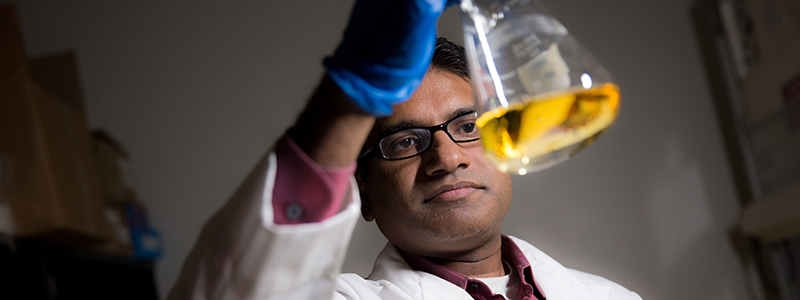Photography Guide

Making a photo request
All requests must be submitted using our project request form at least two weeks before your event or deadline. We can help determine if photography is right for your project.
Priority will be given to photos that serve a promotional purpose, help the institution meet its strategic goals, improve the appearance and content of the HSC website and provide good social media content.
Because of staffing limitations, we no longer will be able to provide “gavel-to-gavel” coverage of events, meetings, awards ceremonies, etc. But we will work with event organizers to help them get the photos they need.
Heads Up Day
Once a month, in LIB 410, we host Heads-Up Day to take basic professional portraits for HSC faculty, staff and students. You will typically receive your photos within five business days. Because of studio space limitations, we won’t be able to shoot group photos on Heads-Up Day. You will be provided two high-resolution headshots. Watch Daily News for updates
Sorry we cannot shoot head shots outside of these set dates or at other locations.
Photography at HSC
Good photographs provide a window to our world. They form an essential part of our efforts to tell the story of The University of North Texas Health Science Center at Fort Worth. Our publications, websites and promotional materials rely on consistent and engaging photos to illuminate the work we do here and the talented and committed members of the HSC community.
This guide is intended to streamline the process of taking and using consistently high-quality photos at HSC.
Photos that reveal who we are
HSC is a graduate-level university tasked with training the next generation of health care providers. It is important work – work that demands dedication, commitment and imagination. But it’s also work that’s fun and exciting. All these elements should be reflected in the photos we produce for our print and digital platforms. Such photos also should reflect what makes us so special – the diversity of our students, faculty and staff, the wide range of professional expertise and life experience represented by the university community, and the creative interprofessional approach we take to teaching.
As such, we seek photos that are clear, sincere and simple – high-energy photos of our team mates in action in their work environments. As much as possible, we try to avoid large group photos because they generally produce boring photos with little drawing power (see shooting tips below). When choosing photos for your website or other uses, make sure photos are current and are the right size and resolution for the medium.
Stock photos
In many cases, we may already have appropriate photos for your website or promotional material in our archive. When you make a request, we can discuss using photos that may already exist. We have also selected a variety of photos of our campus and people that you are free to use:
Freelance photographers
You may prefer to hire a freelance photographer to handle your photo needs if you have the funds to do so. The Office of Marketing and Communications can provide you with a list of talented, reliable freelance photographers who are part of our approved vendors list.
Taking your own photos
Some departments may choose to handle their own photo needs. You don’t need expensive equipment to take quality photographs. Point-and-shoot cameras and cell-phone cameras can provide excellent results if you follow a few simple rules.
- Get close. When shooting people, the trick to good photographs is to move in close. Fill the frame with the subject you’re photographing. That can reveal character and details that would otherwise go unnoticed.
- Avoid large group photos. Yes, getting everybody into the photo is generous and inclusive, but it produces bad, uninteresting photos. It’s difficult to make out individual faces in large group photos, which defeats the purpose of getting everyone in the shot. Rule of thumb: No more than four people in any photo.
- Seek plain backgrounds. As you look through the viewfinder, be aware of what’s going on behind your photo subjects. Check for trees coming out of an individual’s head or other such distractions. A great photo can be ruined by too much activity or clutter in the background.
- Rule of thirds. A photograph is like a painting. Composition is important. Don’t just place your subject in the center of the frame and shoot away. Divide your frame into thirds, both horizontally and vertically, like a tic-tac-toe grid. Then place your subject at the intersection of those lines. You’ll immediately have a more visually interesting image. But remember to lock your focus before composing your photo. Many auto-focus cameras automatically focus on whatever is in the center of the viewfinder.
- Use the flash outdoors, too. Bright sunlight can cast deep shadows on subjects’ faces. A fill-flash setting can eliminate the shadows and illuminate the faces.
- Be the director. Taking control of a photo opportunity can make a dramatic difference in the quality of photos you take. Don’t be a passive picture-taker who just points the camera and shoots. Place your subjects in interesting locations, group them in eye-catching ways, add props when appropriate.


Social media